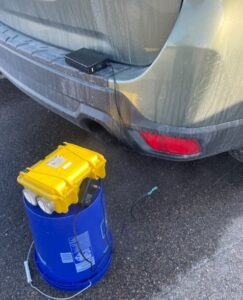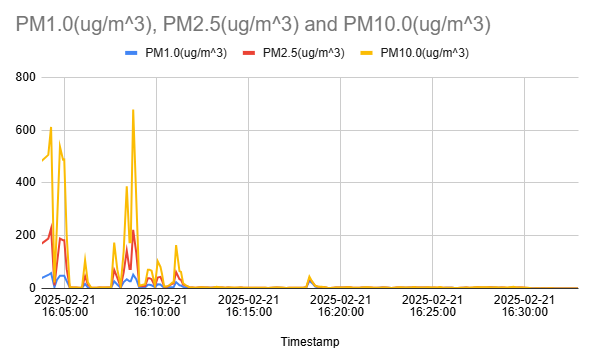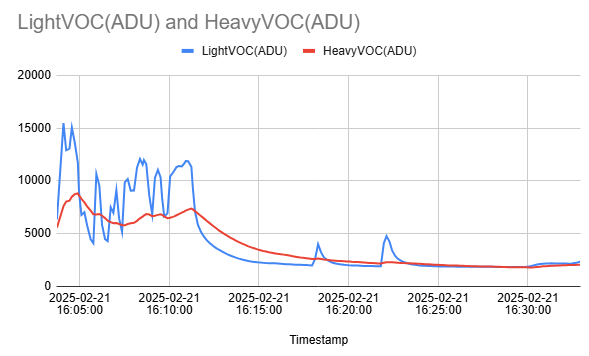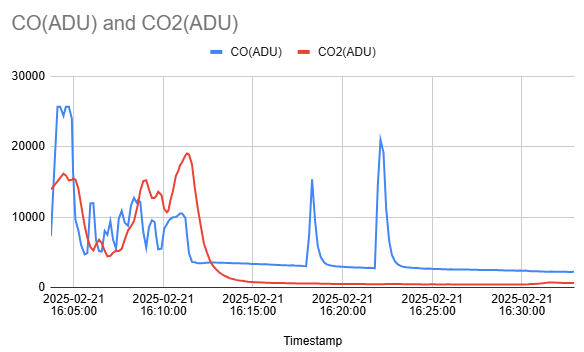2024 – 2025, Greeley West High School, Greeley, Colorado, USA

Alyssa from Greeley West High School addressed air pollution by designing and installing “No Idling” signs in her school’s pickup zone and parking lot, while also educating students, families, and community members about the environmental and health impacts of vehicle idling. When cars idle—leaving engines running while waiting—they emit harmful substances such as carbon monoxide (CO), carbon dioxide (CO₂), volatile organic compounds (VOCs), and particulate matter. These pollutants degrade air quality and can negatively affect human health.
To raise awareness, Alyssa installed signs, distributed flyers, spoke with students and families, and reached out to other schools in her community. Her goal was to encourage people to stop idling, protecting both the environment and the health of students. In her initial research, Alyssa monitored a single idling car and found that, in under 10 minutes, it emitted CO/CO₂, VOCs, and particulate matter in various sizes. Motivated by these results, she had “No Idling” signs placed at her school’s entrance and created informational brochures to further educate families and students. You can view some of Alyssa’s content below.
Alyssa’s project raised awareness among peers and community members visiting the school. Her solution aligns with Sustainable Development Goals 11.6 and 15.5 by promoting cleaner air and environmental protection.
Help Keep Our Air & Water Clean – Say No to Idling!
Why does it matter?
- Idling for just 10 minutes wastes fuel, pollutes the air, and harms our watershed
- Vehicle exhaust contributes to air pollution and contaminated rainwater runoff, affecting local streams and rivers
- Gases like carbon dioxide (CO2), methane (CH4), and nitrous oxide (N2O) contribute to climate change
- Turn your vehicle off if it is stopped for more than 30 seconds
- Spread the word! Support ‘No Idling’ in our school parking lot
- Join us in protecting our communities water and air
The following graphs represent data collected using a Y-Pod borrowed from CU Boulder. The Y-Pod measured the emissions from an idling car in the Greeley West High School parking lot.
The spikes on the graph show relative amounts of emissions, and the drop-off of emissions is from when the car was turned off. Spikes toward the end of the graphs are from separate vehicles being turned on in the parking lot, which indicates that a running engine contributes to emissions even from a distance.
 |
 |
 |
Particulates released while car was idling
Particulate matter is harmful as it can enter our lungs and bloodstream, causing respiratory and cardiovascular issues. Long-term exposure increases the risk of asthma, lung disease, and heart attacks. Environmentally, it contributes to smog, reduces air quality, and harms plants and wildlife. |
Light and heavy VOCs released while car was idling
Volatile organic compounds (VOCs) are harmful as they contribute to air pollution and can cause health issues like headaches, dizziness, and respiratory irritation. Long-term exposure is linked to liver, kidney, and nervous system damage, and some VOCs are carcinogenic. Environmentally, VOCs can form ground-level ozone, which harms air quality, damages crops, and affects plant/insect/animal interaction within ecosystems. |
CO & CO2 released while car was idling
Carbon monoxide (CO) is harmful as it binds to hemoglobin in blood, reducing oxygen delivery to the body, causing dizziness, confusion, and even death in high concentrations. Carbon dioxide (C02) is a major greenhouse gas that traps heat in the atmosphere, leading to global warming and climate change, with consequences such as rising sea levels, extreme weather events, and ocean acidification.
|